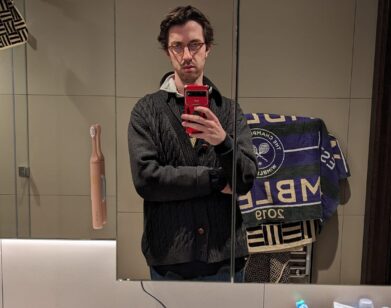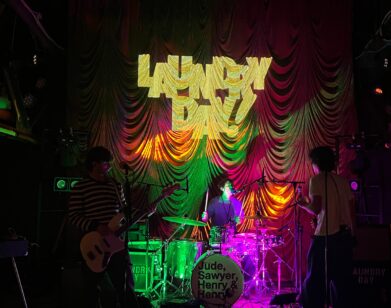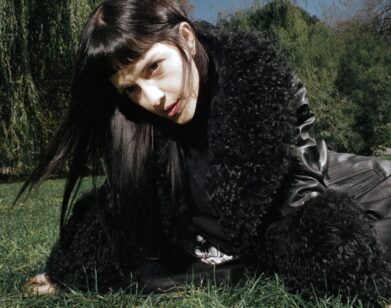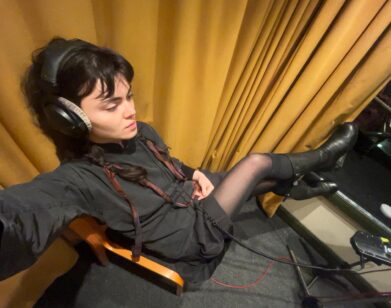Marcus Marr, Rocket Man
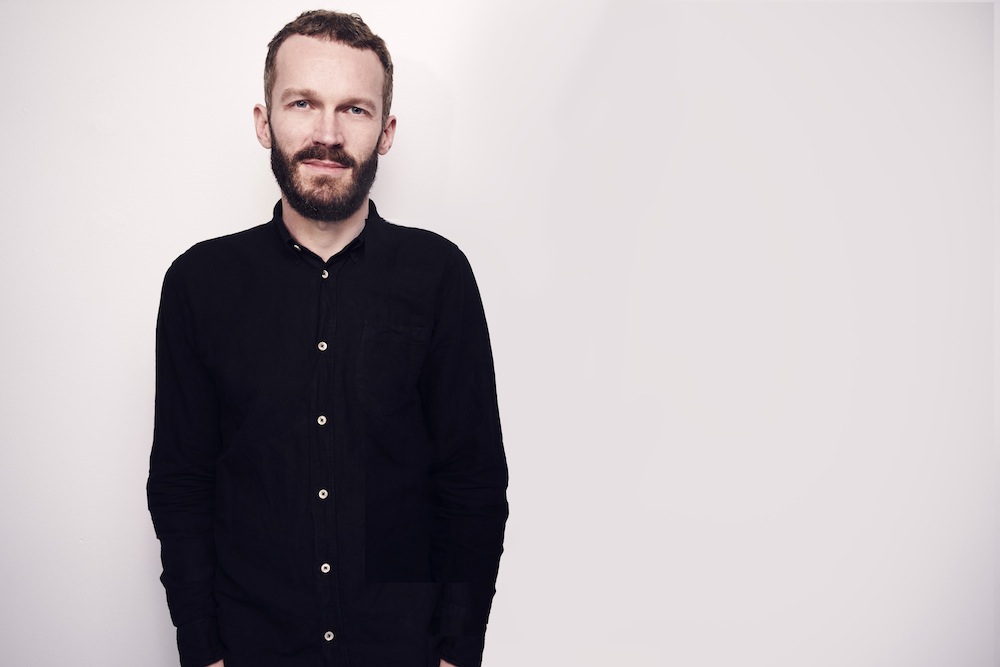
ABOVE: MARCUS MARR. PHOTO COURTESY OF WILLIE WARD.
Marcus Marr has long been making waves in the music halls of his native London, and he seems destined to have a similar impact stateside. Here, he’s perhaps best known for his December 2015 EP Work (Future Classic), a collaborative release with Aussie hitmaker Chet Faker. Its four disco-tinged confessional tracks marked the “mainstream” arrival of an inimitable musical talent and left us looking forward to Marr’s next move.
Luckily, the producer and multi-instrumentalist’s latest solo single, “Rocketship,” lives up to the buzz; it whirrs in at the speed of light with a single promise—it’ll make you dance. Marr is now in the midst of a U.S. summer tour that will take him from New York to California and back again over a quick three weeks. We spoke with him the day after his first New York stop, where he did a DJ mix for Tim Sweeney’s Beats in Space show, to chat about his U.K. roots, “Rocketship,” and his two upcoming New York outings at MoMA PS1 and this weekend’s Full Moon Festival.
BENJAMIN LINDSAY: Is the Rocketship Tour your first U.S. tour bouncing around these cities?
MARCUS MARR: It’s the first time I’ve been to Washington and the first time I’ve been to Boston, but I’ve done two tours of the United States. The first one was mainly the East Coast and the West Coast. The second one, which was a few months ago, included a couple of places more in the middle of the States like Austin and Colorado. It also went up to Washington state. I did the Sasquatch Festival. That was fun because I played a DJ set, and then I went over to a different tent and played the guitar and did some singing as part of Chet Faker’s band, so I was wearing two hats that day.
LINDSAY: Going into this string of upcoming shows, is it going to be just DJ sets?
MARR: Strictly DJ sets.
LINDSAY: What does a live outing for you generally entail? What’s the energy like?
MARR: It depends on a number of different things. It depends on the venue, the crowd, the sound system. I often find that if you play in a place where DJs don’t come very often, the partying might be a bit more intense because it’s more of an event that you’re there. But if you’re in a place where DJs are coming all the time, sometimes it’s less intense. Some of the most intense parties I’ve played at were at small clubs, specifically in France. The energy was bordering on mayhem, and that’s obviously a real thrill to play in that kind of situation. Also in a smaller club, you’re often not on a raised platform. All the dancers are right in front of you. There’s no division. It just feels a lot more visceral and direct. It’s a lot more exciting; it’s a lot more fun. But then again, playing to an enormous crowd, it’s a different thing, but it can still be amazing.
LINDSAY: It’s my understanding that those smaller venues were your first entrance into music in the underground nightlife of London. Is that right?
MARR: That’s right. I began, well, do you want to go back into my origins?
LINDSAY: Yeah, let’s hear the origin story.
MARR: All right, here we go. I was always really interested in music. I was always the one amongst my friends who was sort of the obsessed one. By the time I was about 15, 16, I wanted to be a guitarist. I wanted to be James Williamson from The Stooges. I bought for 99 quid a baby blue guitar from a junk shop in Clapham, in London, and taught myself how to play the guitar one string at a time, and basically learned how to play the riffs on “Raw Power.” That’s kind of where I started. And then it was a couple of years later that my brother bought an acid house compilation. I just heard the sounds on that and I had no idea how they were made, and I wanted to understand how they were made. And that’s when I got into dance music. I started breaking out of school to go to raves. It was always an obsession to learn how those songs were made. I heard “Energy Flash” by Joey Beltram, and I thought if I could make a record like that one day, I could die happy. Once you get into dance music, you start getting into the technical side, the production side, and that’s when I started to get into that side of things instead of just playing the guitar.
LINDSAY: It sounds like you developed an interest in the genre before it was as prominent as it is today.
MARR: Exactly. Well, I’m from the U.K., and the timeline and the whole thing is completely different in the U.K. We had what we called acid house back in 1988 with U.K. style raving acid house and house records from Chicago. And then shortly after were techno records, originally from Detroit. So in the U.K., we idolized American artists. We idolized the people who invented house music. We had a whole dance music scene in the U.K. for years and years, and it was an underground scene, but immensely popular. I remember thinking it so odd that this music comes from America, and yet in America, it doesn’t seem to be such a scene. Only in the last few years has it really seemed to—well, it’s been going for a while now, but there was a long period where it was mystifying to us in the U.K., why the underground dance music scene seemed to be so much bigger in Europe than it did in America where it actually all began.
LINDSAY: When you’re in the studio, do you have one instrument that you rely on most to get started?
MARR: There are no rules at all, but I would say the most common pattern is for me to get a beat going. I like to, if I’m working on the computer—say, if I can get a beat that sounds sweet to my ears, then things tend to flow from that. If I spend ages getting the drums working and grooving, a bass line will just appear in my brain as if it’s already been there. And then, obviously, as soon as it arrives, I will pick up my bass guitar, play it in, and then the guitar parts and then the keyboard parts. That’s the classic way that it happens for me. But if I’m stuck, let’s say there’s no beat and I’m just playing the guitar, if I get stuck on the guitar, I will switch to the piano because I’m not nearly as good at the piano. I’m fairly crap. I’m still a bit of a child, basically. I don’t have patterns and things that I’m locked into, so it’s useful, I find. If I get stuck, I switch to the piano, and things can happen. Accidents can happen that can get you into finishing the song.
LINDSAY: So happy accidents in that case.
MARR: Happy accidents are the way.
LINDSAY: Do you generally work by yourself, or do you find collaboration to be a positive in your process?
MARR: I generally do work by myself. Doing this collaboration recently with Chet Faker was a surprise to me. I was a little nervous because I didn’t know that I was really able to collaborate—not to sound too much like a control freak. But in this case, it was remarkably smooth and really a joy to work with the guy. We found very quickly that we were able to create stuff and finish stuff. It was a very good division of labor because we both write lyrics, we both are instrumentalists. I’ll have to do more collabs. It was an eye-opener how much fun it can be.
LINDSAY: What did you walk away from that experience with that you can now apply to your solo work?
MARR: First of all, I now know that I can collaborate and it can be a really wonderful experience. Second of all, I learned that I can learn a lot about the actual mechanics of recording. Working with Nick, he’s big on backing vocals. I’ve always loved backing vocals, but I didn’t realize what a weapon they could be. So on the song “Killing Jar,” he said, “Let’s do some backing vocals,” and went to the microphone and I let him take over. And he helped set up how to mix them, how to process them. It just lifted the song. That was a massively thrilling moment for me.
LINDSAY: Looking to your new song, “Rocketship,” and also looking to some of the tracks on Work, it seems that production wise, you’re lately interested in funk and disco and how that relates to electronic dance music.
MARR: Dance music as we know it now, its roots, it’s all disco—do you know what I mean? Disco as a word has had ups and downs over the years, but basically, it’s all disco music. The drum patterns in house, especially, you can find them in disco. I personally consider it one massive thing in my mind, just different schools and different ways of doing it. It’s all about making people dance and getting a good groove together. I would say that for me, I am a guitar player and a bass player. If you play an instrument, there’s something about the sound of it, the variety you get through actually playing a real instrument. You can use synths, but you actually have to program in a variety, whereas through a guitar or bass, through your own little mistakes, no two hits on an instrument are going to sound exactly the same. So you’re immediately injecting a lot of variety. That translates as interest to the listener. I like to use old-fashioned guitars and basses as well as synthesizers. I feel it enriches my music.
LINDSAY: Is “Rocketship” going to lead to a new EP release?
MARR: That’s right, I’ve got an EP coming soon on DFA Records. I can’t reveal too much about it, but there’ll be a few surprises on there. It’s quite a varied EP. It’s 98 percent done, I would say. There are a couple of bits on the recent Beats in Space mix where you might be able to get a little taste of it.
MARCUS MARR PERFORMS AT MOMA PS1 THIS SATURDAY, AUGUST 20, 2016. ON SUNDAY, AUGUST 21, HE’LL PERFORM AT DAY TWO OF FULL MOON MUSIC FESTIVAL. FOR MORE INFORMATION ON MARCUS MARR, VISIT HIS FACEBOOK PAGE.

